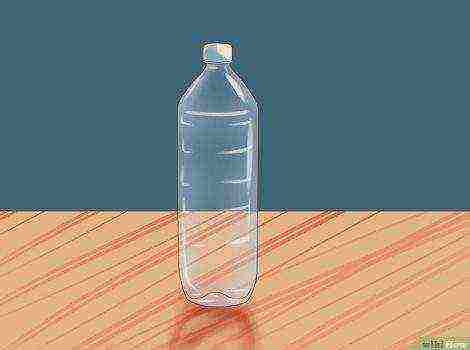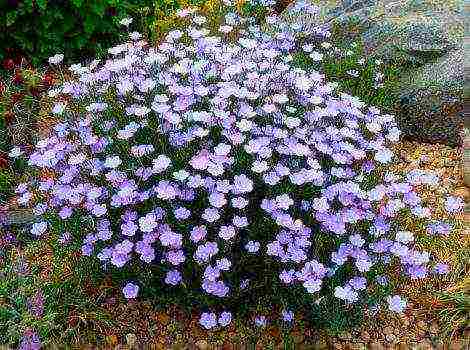Content
- 1 Basil varieties
- 2 When to plant basil seeds
- 3 Growing basil from seeds
- 4 Caring for the basil in the apartment
- 5 What is Basil?
- 6 Which variety should you prefer?
- 7 Cultivation methods
- 8 Optimal time to grow basil
- 9 How to grow basil from seeds on a windowsill?
- 10 Care of young seedlings
- 11 How to grow basil at home on a windowsill in winter?
- 12 Diseases to which the plant is susceptible
- 13 How to harvest correctly?
- 14 Unique properties of basil
- 15 How to grow basil from cuttings in an apartment or house?
- 16 Growing basil from seeds at home: step by step instructions
- 17 How to properly transplant an adult plant into a pot on the eve of winter?
- 18 Culture care
- 19 Pests and diseases
- 20 Common mistakes gardeners
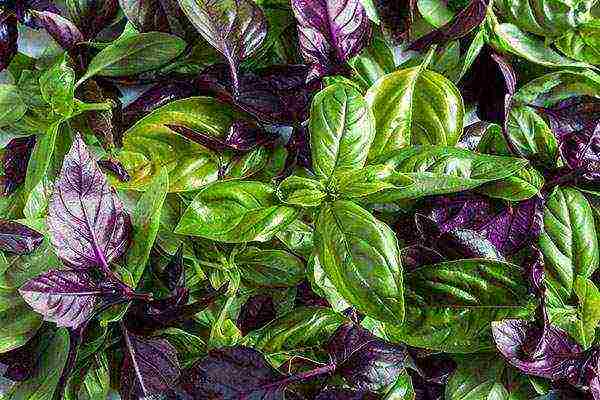 Basil has an amazing aroma and is used as a condiment. Growing basil seeds in a city apartment will provide a family with healthy greenery for the whole year. The value of the leaves lies in the content of essential oils and vitamins PP, B1, B2, C.
Basil has an amazing aroma and is used as a condiment. Growing basil seeds in a city apartment will provide a family with healthy greenery for the whole year. The value of the leaves lies in the content of essential oils and vitamins PP, B1, B2, C.
It is an annual plant with a straight, branched stem, densely covered with leaves and a superficial root. The leaves of different varieties of basil differ in color (light green to purple), corrugated in structure, carved, flat. Flowering occurs in late July - early August, when a sufficient amount of essential oils with a pleasant aroma accumulates in the leaves.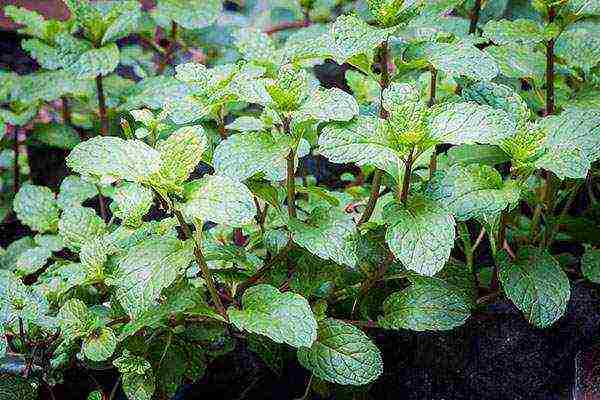
Basil varieties
There are varieties of basil seeds intended for growing in pots and containers on the windowsill:
- Spoon-shaped, clove exudes a smell reminiscent of a mixture of laurel with cloves, differs in light leaves.
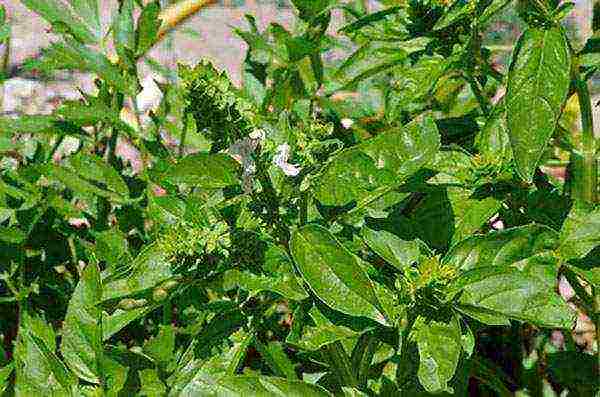
- Yerevan has a pleasant aroma, reminiscent of allspice tea.

- Baku smells like cloves and mint, the leaves are purple with a brownish tint.
- Violet is characterized by large, purple-colored leaves, has a very delicate taste.

- Lemon is one of the rare varieties that grow in the form of a small bush with pale green leaves, has a pronounced lemon aroma.

- The dwarf grows no higher than 20 cm, it is a bush with small green or purple leaves, collected in a ball.
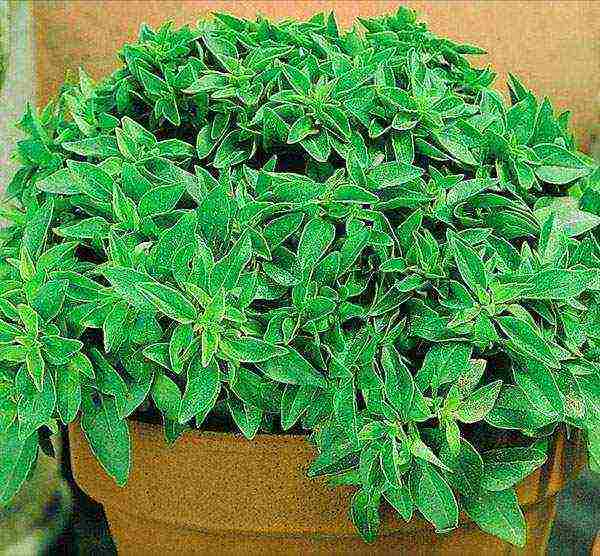
Basil is chosen depending on taste preferences. The earliest ripening dates are in the varieties "Clove", "Lemon", "Dwarf".
To grow basil from seeds on a windowsill in an apartment or house, they acquire undersized species.
When to plant basil seeds
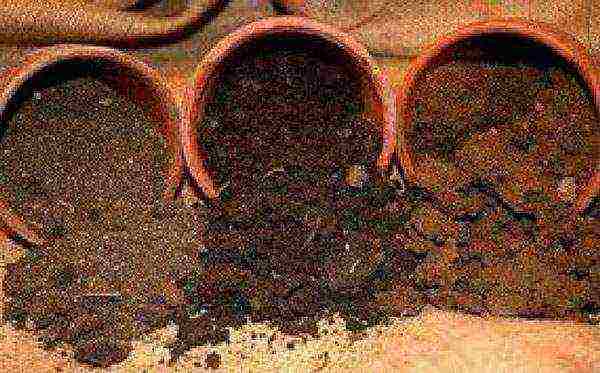 To get a good harvest, you need to know when to plant your basil seeds in your apartment. This plant loves warmth and sunlight, with a lack of them, the leaves will be thinned and weak.
To get a good harvest, you need to know when to plant your basil seeds in your apartment. This plant loves warmth and sunlight, with a lack of them, the leaves will be thinned and weak.
The best time to plant seeds in pots is late February, early March. The plant will have time to form and the period of active growth will fall on a long daylight hours. If the landing is carried out at a different time, he will not have enough sunlight.
When growing basil year-round on a windowsill, you need to install fluorescent lamps and turn them on for 4-5 hours in the evening, and on a rainy day, the light should be on for 10-12 hours.
Growing basil from seeds
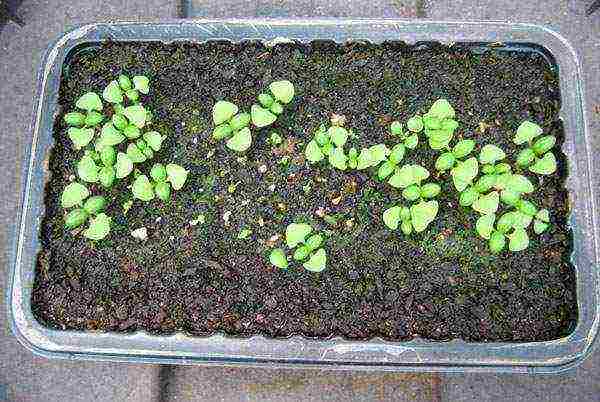 Consider how to grow basil on a windowsill at home. When you have decided on a plant variety, prepare containers and soil for planting it.
Consider how to grow basil on a windowsill at home. When you have decided on a plant variety, prepare containers and soil for planting it.
Small pots or plastic cups are suitable for planting seeds. A layer of expanded clay drainage is laid at the bottom.You need fertile soil with organic fertilizers. You can buy it ready-made or prepare it yourself.
The sequence of actions when planting basil seeds:
- The seeds are kept for 2 weeks in a warm place.
- Before planting, they are soaked for a day in warm water, then kept in a weak solution of manganese for 2 hours.
- Moisten the soil and plant several seeds in one container to a depth of 10 mm. Excess, weaker shoots are removed after germination.
- If planting is carried out in large containers, the distance between the seeds should be more than 5 cm. The seedlings are covered with plastic wrap, which provides a greenhouse effect. To prevent the soil from growing moldy, raise it every day for 10 minutes.
If the temperature is maintained within 22-28 degrees, the first shoots will appear in 1-2 weeks. After that, remove the film and place the containers in a bright, warm place, protected from drafts. When 3-4 leaves appear on the stem, it must be transplanted in such a way that there is a liter of soil per stem.
Caring for the basil in the apartment
 We need regular watering and spraying of the leaves. To saturate the soil with oxygen in pots with formed plants, it is carefully loosened every 10-14 days.
We need regular watering and spraying of the leaves. To saturate the soil with oxygen in pots with formed plants, it is carefully loosened every 10-14 days.
They are fed with mineral or organic fertilizers every 30 days from the moment the branches grow on the sides of the stem.
When the bushes grow of sufficient size, they begin to break off the outer leaves, this promotes better growth and postpones the flowering time.
Fresh, dried, frozen leaves are used for cooking.
Bloom must not be allowed. When color appears, the leaves become bitter and unusable.
Growing basil from seeds on a windowsill in an apartment or a country house does not give owners much difficulty. Subject to the rules described in this article, the plant will delight the owners all year round.
Growing basil on a windowsill - video
Basil is a plant that is ideal for growing at home. The culture grows at any time of the year and is not whimsical. Therefore, even a beginner will cope with its cultivation. In our article, we want to talk about how to grow basil on a windowsill.
What is Basil?
Basil is an indispensable spice used by people for a long time. The plant is rich in essential oils, therefore, in addition to cooking, it is also used in natural cosmetics. In good conditions, it grows in greenhouses, in vegetable gardens, so you shouldn't even doubt whether it is possible to grow basil on a windowsill.
The culture originated from India. Presumably the name of the plant goes back to the Greek basileus, which means king or king. There are two different versions regarding the origin of the culture. According to one of them, the basil was found near the place where Queen Helen once discovered the True Cross. According to another version, the plant was used to treat people of royal families.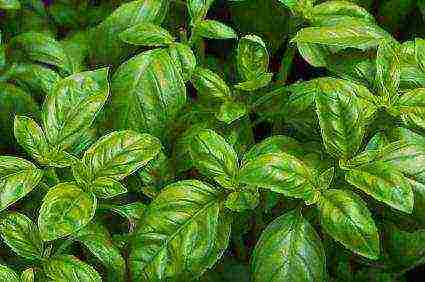
Basil has long been used for religious rituals in Orthodoxy (in the Balkans and in Greece) and Hinduism. Ayurveda appreciates culture not only for its cosmetic, but also medicinal properties. There are many varieties of basil. In cooking, fragrant varieties are often used. They all differ not only in appearance, but also in smell and taste.
Which variety should you prefer?
Basil attracts not only as a culinary additive, but also as a medicinal plant. At home, it can be used as an interior decoration. Recently, the popularity of the plant has increased more and more. Therefore, when thinking about how to grow basil on a windowsill, you should decide which variety you prefer to see on your balcony. We have already said that the plant is unpretentious. However, it should be understood that not every variety is suitable for growing at home.The most acceptable options may be the following types: spoon-shaped, Yerevan, Baku, marquis, clove aroma. These varieties are small-leaved, and therefore easier to cultivate at home. Large-leaved plants need a fairly large amount of trace elements that must be introduced into the ground. Only experienced gardeners can handle such care. Therefore, novice housewives should pay attention to small-leaved varieties.
When a gardener already has experience in caring for simpler species, and understands how to grow basil on a windowsill, you can move on to other varieties.
Cultivation methods
How to grow basil on a windowsill? There are three ways:
- An adult plant can be transplanted from the soil into a pot. This is what summer residents do, who in the summer grow crops in their personal plots. Young bushes that have not yet bloomed can be transplanted into a pot together with an earthen clod. However, the growing season of the plant is short, so it will soon bloom. And then you have to cut off the shoots to plant young plants.
- Growing a plant from cuttings. To do this, the tops or side shoots are cut off and placed in the water. This is necessary in order for them to put down the roots. Then the basil is transplanted into a pot, the first greens can be cut off in two to three weeks. Such bushes can last you about three to four months, after which you need to renew the plant again.
- Growing basil from seeds is the longest way. It will take a long time to get good greens. If you need a faster result, then it is better to use the second method.
Optimal time to grow basil
How to grow basil on a windowsill in winter? Basil can be grown in principle at any time of the year, including in winter. However, it should be understood that the plant belongs to light-loving and heat-loving crops, and therefore in cold periods it will take more effort to maintain.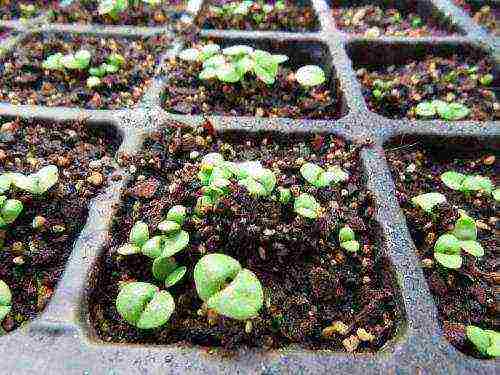
Some housewives wrap the basil pots with polyethylene in winter to protect them from drafts and increase the temperature. In addition, from October to March, in our climate, the basil does not have enough sunlight, so the plants will have to be illuminated. This will help to artificially increase daylight hours. To simplify the care of the plant, many housewives prefer to sow seeds in February, then the main period of active crop growth will be just a period with a sufficient length of daylight hours. And in the summer, basil will feel great on the window in the apartment.
How to grow basil from seeds on a windowsill?
Before you start planting, you need to prepare the ground. You can take good soil from your summer cottage, or you can purchase a ready-made substrate. A little peat can be added to the soil from the garden to lighten it.
Sometimes basil is planted in a mixture of peat and humus (humus can be replaced with coconut fiber) in a 2: 1 ratio. Before sowing, the seeds should be held for a couple of hours in a solution of raspberry-colored potassium permanganate.

While talking about how to grow basil on a windowsill in an apartment, it is worth remembering that you need to pick up pots for plants for planting. There are two options here. You can sow seeds in small containers (200 g), and then transplant the plants into larger pots. But in general, you can use large drawers right away, this will save you a lot of hassle. Expanded clay should be placed on the bottom of the vessels as drainage. Seeds are sown in moist soil to a depth of no more than one centimeter at a distance of 7-10 centimeters from each other. After that, the pots should be tightened with cling film and do not remove it until shoots appear. Further, in order to quickly grow basil at home on the windowsill, you should create optimal conditions. At a temperature of + 22-28 degrees, the first shoots will appear in five to eight days.
Care of young seedlings
As soon as young shoots appear, it is immediately necessary to rearrange the pots in a well-lit and warm place. Plants need to be watered regularly. This should be done once a day; on the hottest summer days, you can moisten the soil in the morning and in the evening with water at room temperature. Basil can be sprinkled with water from time to time, especially in summer.
To understand how to grow basil in a pot on a windowsill, you need to know that the subtropics are the birthplace of the plant. That is why culture needs an abundance of warmth and light. In order for the plant to develop well and grow quickly on the windowsill, the air temperature should be at least +20 degrees, but better than +25 degrees, and the sun should shine for at least 4 hours a day.
Basil is very afraid of drafts. Adult bushes can loosen the soil once every three days. If the soil in pots is not very fertile, then periodically (no more than once a month) it should be fertilized. Any universal fertilizer based on gummates or organic compost is suitable as a top dressing.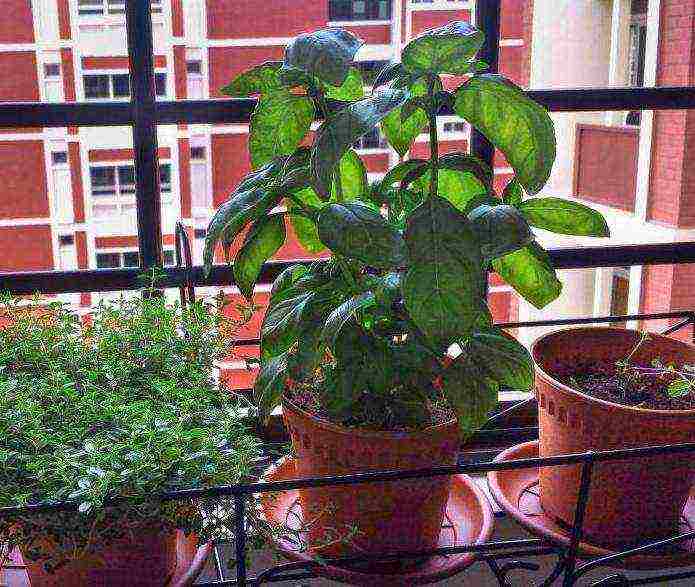
The first leaves can be torn off from the plant in 1.5 months. In the future, cutting off the greens, you need to leave at least three leaves on the stems. This is necessary so that new branches begin to form in the sinuses. When the basil grows up, you can pinch the top of it, then the bush will grow in breadth.
How to grow basil at home on a windowsill in winter?
If you decide to sow seeds in winter, then you will need more careful care to grow a good plant. On the one hand, the culture needs good watering, and on the other hand, excessive waterlogging can lead to diseases. Therefore, you need to be careful with water.
The most comfortable temperature for basil is + 20-25 degrees. In winter, the daylight hours for a plant are not long enough for normal development, so it must be additionally highlighted. To do this, in the evening, you can turn on the lamp for 3-4 hours. Basil does not tolerate temperature extremes and drafts.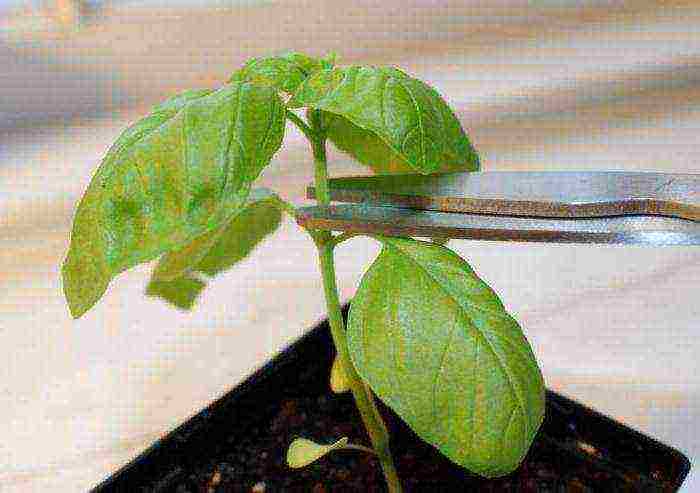
Given these points, the culture can be grown at home in the winter cold.
Diseases to which the plant is susceptible
Basil, like many other crops, is susceptible to various diseases. Of course, indoor plants are less sick than outdoor plants, but it is still worth protecting yourself. The most common diseases that affect basil are fusarium and gray mold. To prevent your bushes from being struck by such ailments, you need to avoid overflow, since excessive moisture provokes an ailment. If the plant is still sick, then it is necessary to remove the affected stems in a timely manner so that they do not infect healthy shoots.
How to harvest correctly?
In order for the plant to grow well and continue to develop in the future, you need to be able to harvest correctly. You should never pinch off basil at the very root, this can harm the plant. In order to increase the life of the plant, it is necessary to remove the peduncles as soon as they appear. Basil should not be pinched off at the root, it can ruin the whole plant. In general, you can remove the leaves, but you should leave 4-5 leaves, in the future new branches will begin to appear from their sinuses.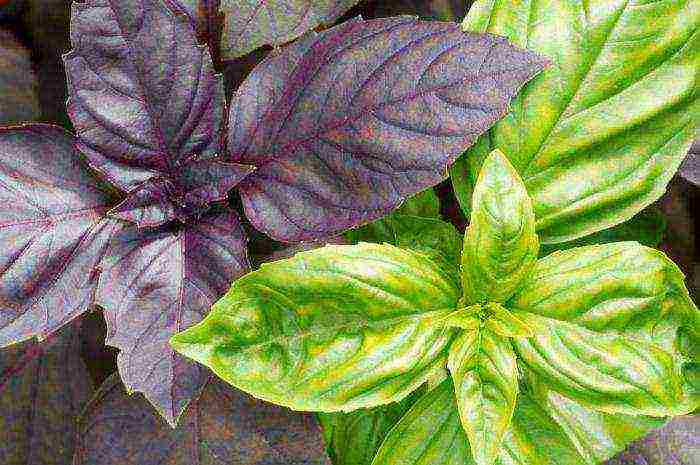
In order to less injure the bushes, it is better not to pinch off the foliage, but to cut it off with scissors. Greens are easily removed by them, and the stems are not injured.
Knowing all the intricacies of the process, it is pretty easy to grow basil at home on a windowsill. Therefore, each hostess can try her hand.
Basil is an unpretentious crop that can be grown at home throughout the year. But since this plant is of tropical origin, in order to get a harvest, it is necessary to create certain conditions for it. Therefore, before you start planting, you should figure out how to grow basil on a windowsill.For this purpose, it is advisable to use undersized varieties: Clove, Marquis, Dwarf, Yerevan, Lemon or Violet.
Unique properties of basil
Basil is widely used in medicine and cooking. It has many positive properties. The plant has an analgesic, antiseptic, bactericidal, diaphoretic, antispasmodic and expectorant effect on the body.
Basil is a versatile home remedy that relieves many symptoms
Basil is used to treat:
- bronchitis;
- asthma;
- tuberculosis;
- urolithiasis;
- hyperemia (an increase in the amount of blood supplied to any part of the body);
- cardiovascular and skin diseases;
- conjunctivitis;
- gastroenteritis;
- rheumatism;
- measles;
- headaches;
- caries;
- tartar and plaque;
- pathologies resulting from radiation damage.
In addition, basil strengthens the immune system well.
Not surprisingly, many growers choose to grow basil in their home. Indeed, the plant contains a large amount of potassium, due to which its use helps to reduce blood pressure.
Basil is a healthy and tasty spice
There is a positive effect of basil on the emotional state of a person. The plant helps to reduce stress, reduce feelings of nervousness and anxiety. Vitamin A, C, essential mass and phytonutrients that make up it, rid the body of free radicals and help prolong youth.
However, basil also has negative characteristics. Its overdose can provoke poisoning. When it comes into contact with mucous membranes, the plant causes irritation. Its use is contraindicated during pregnancy, with vein thrombosis and blood clotting disorders. Thus, despite the wide list of positive properties of this plant, it is categorically not recommended to use it without consulting a doctor.
Basil should be used correctly so as not to harm yourself
In cooking, basil is used in the preparation of ketchups, sauces, dressings, gravy, sandwich butter. It is added to products during the smoking and canning process. It improves the taste characteristics of sausages, pates, omelets, salads.
This plant goes well with parsley, tarragon, mint, coriander and marjoram. But it should be borne in mind that basil has a fairly rich aroma that can overpower the smells of other spices. Therefore, use it sparingly.
How to grow basil from cuttings in an apartment or house?
There are several methods you can use to plant basil at home. Cutting is perhaps the fastest of them, because it allows you to get greens in two weeks.
Cutting is a simple and reliable method of growing basil
Cuttings are cut from the basil bush. When buying a plant, you need to make sure that it is not wilted. Basil is not required to have roots. You will also need a knife or scissors, water (+ 25 ° C) and a glass jar.
Landing is done as follows:
- First, 5 cm side shoots are cut under the leaf nodes.First, we cut off the sprout for grafting
- Then they are placed in jars filled with water and placed on a windowsill. We put the cuttings in water and wait for the roots to appear
- The water in the tank is changed daily. After a week, small roots will appear on the cuttings.
- When they reach a length of 4 cm, the basil is transplanted into a pot. 3 plants are placed in one container.
Rooting cuttings in a pot
For culinary purposes, leaves are used, which are cut when the plant reaches 15 cm in height. The life span of such a bush is 3-4 months.
Important! Cuttings must be protected from sunlight, as exposure to ultraviolet radiation can cause plants to burn and die.
Soil and pot requirements
Basil requires fertile and light soil.You can find ready-made soil mix in a specialized store. In this case, preliminary preparation is not necessary. But if the soil mixture is prepared at home, it must be poured with a solution of 1 liter of water and 1/8 tsp. potassium sulfate, urea or superphosphate.
Ensure proper soil composition and pot drainage
Basil soil can be composed of the following components:
- humus, earth and peat mixed in equal proportions;
- one part coconut fiber and two parts humus;
- compost and soil (2: 1);
- peat and humus (2: 1).
It is advisable to place the soil in an oven preheated to 100 ° C for 60 minutes. After that, the soil is watered with fertilizers. When planting basil, you will definitely need drainage, which is placed on the bottom of the pot with a layer of 3 cm:
- small pebbles;
- coarse sand;
- gravel;
- crushed stone;
- expanded clay.
The plant is planted in pots with a volume of 1.5 liters.
Important! When growing basil, it is imperative to use drainage, as excessive soil moisture can cause the development of diseases.
External conditions
Basil is a thermophilic crop, so it must be grown at 22–25 ° C. The pots are placed on the south side. Also, the plant needs good lighting for up to 15 hours a day. You can provide the necessary conditions using fluorescent or halogen lamps.
Basil loves sun and warmth
But at the same time, the features of these devices must be taken into account. Halogen lamps are not only a source of light, but also heat. In this regard, it is recommended to use such lighting elements in the cold season or in the case of growing basil on the balcony.
Growing basil from seeds at home: step by step instructions
The development of seed-grown basil bushes will take from 8 months to a year. But the advantage of this method is that you can get greens from such a plant much longer than using cuttings.
Growing basil from seeds is a time consuming process
To plant seeds, you need to prepare:
- drainage;
- container 15 cm deep or a pot with a capacity of 1.5–2 liters;
- soil mixture, which is prepared in the same way as in the previous version;
- scapula;
- plastic bag or cling film.
The sequence of actions is as follows:
- It is recommended to start work with seed preparation. This step is not considered mandatory, but it will speed up the emergence of sprouts. The seeds are soaked in water (25 ° C) for two days. In this case, fluid is replaced every 12 hours. It is advisable to prepare basil seeds before sowing.
- After that, the planting material is dipped into a potassium manganese solution. It should be a composition of low concentration of light pink color, in which the seeds are kept for two hours. After that, they are removed from the water onto a napkin and dried. Seeds must be soaked and disinfected
- Next, drainage is poured into a container or pot, and prepared soil is poured on top. At the same time, 3-4 cm should be left between the surface of the soil and the edge of the container. The earth is leveled and well watered. Fill the pots with potting soil
- Then they start sowing seeds. They are buried 1–2 cm, keeping the distance between plants at 8–10 mm. Sowing seeds into the soil
- The containers are covered with foil or a transparent plastic lid to achieve a greenhouse effect. The pots are placed on a well-lit windowsill. Every day, the foil is opened for 10 minutes to allow airing of the basil. Cover the sowing with a lid
- After 8-12 days, the first shoots will appear. After that, the film is removed, and the room temperature is lowered to 16–20 ° C. This is to prevent over-stretching of the plants. We are waiting for the emergence of seedlings
- When the sprouts reach a height of 5-7 cm, add 2-3 cm of soil to the pot. This will help strengthen the seedlings.
After removing the film, the basil must be cleaned regularly and on time.The temperature in the room should be kept within 20-25 ° С. At the germination stage, the soil is moistened every two days. Watering should be moderate. Top dressing during this period is not required for the plant. The nutrients added to the soil mixture are sufficient to ensure the full development of the basil.
Video: sowing basil seeds
How to properly transplant an adult plant into a pot on the eve of winter?
Basil transplantation is carried out when growing crops in the open field. In this case, in August or September, the plant must be moved to a pot so that it does not suffer during the cold period. The soil composition is prepared in the same way as when planting cuttings. The volume of the pot should be up to 2 liters.
Basil is transplanted to protect against winter frost
The transplant has the following features:
- First, a drainage layer is placed in the pot. Then they fill it with soil, in which a depression is made, where water is poured.
- When the moisture is absorbed, the bush is gently poured in, removed along with the earthen lump and transferred to the pot. In this case, it is necessary to ensure that the roots are not damaged or bent.
- The plant is covered with soil and slightly compacted. If in the process of transplanting some parts of the bush were damaged, they should be cut off.
Video: practical tips for transplanting
Culture care
You need to start caring for the plant immediately after removing the film. Timely implementation of all measures will allow to grow a healthy culture.
Watering
Watering the basil depends on the temperature conditions. In warm weather, the procedure is carried out daily. On hot days, the frequency of watering should be 2 times a day. The bushes are moisturized in the morning and at lunchtime using a spray can for this purpose.
The watering rate is determined by the condition of the soil - it should be moderately moist (so that the water does not stagnate in the pan of the pot).
It is undesirable to water the plant in the evening. This rule is due to the fact that a cool temperature is set in the room at night. As a result, the evaporation of water from the soil slows down and the likelihood of developing diseases of the bush increases.
Fertilizers
If fertile soil was used when planting the basil, there is no need to feed it, since it is an annual plant with a short growing season.... For the development of the bushes, there will be enough substances introduced initially into the substrate. If the seeds or cuttings were planted in regular garden soil, then the basil should be fertilized once a month.
Fertilizer will help the plant to obtain nutrients from ordinary soil.
The plant is watered with a nutrient solution, which is prepared from 2 liters of water and 1 cap of the Growth preparation. Also, Agrolife fertilizer is applied to the upper layer of the substrate (1 tsp per pot).
Pruning
Pruning is done to encourage lateral shoot development. The procedure consists in removing the top of the bush at the level of 6-8 leaves. It is carried out 15–20 days after germination. You should also remove all flowering shoots immediately after they appear. This will enhance the branching of the basil, help preserve the aroma, and help increase the plant's lifespan.
Pruning basil will help it grow in breadth
Other features
- In autumn and winter, it is recommended to wrap the pots with plastic wrap. This will help protect the plant from drafts.
- In the period from October to February, the basilica needs additional lighting in the evening. Lamps are installed at a distance of 20 cm from the bushes.
- On cloudy days, the plant needs artificial lighting.
- Basil can be grown year-round. But in order for the plant to receive a sufficient amount of natural light during the growth period, it is advised to plant in March.
- When the size of the bushes reaches 15 cm, you can harvest.At this stage, the formation of the stem is completed, so the loss of leaves will not affect the development of the basil.
Important! Basil must be protected from drafts.
Pests and diseases
Among the pests, aphids are dangerous. It provokes the appearance of such symptoms:
- the leaves are deformed, lose their color and curl up;
- the growth of the bushes is suspended, and the stems are bent.
As a treatment, spraying with the drug Decis (1 g per 5 l) or Fitoverm (4 ml per 20 l) is carried out. To prevent a pest attack, you must follow the rules of care.
Basil, which is grown at home, is much less likely to suffer from ailments and pests than bushes growing in the open field. But violation of the rules of care can provoke the onset of diseases.
Table: Basil Diseases
Common mistakes gardeners
Mistakes in the cultivation of bushes and harvesting can cause disease and death of the plant. Basil is undesirable to excessively moisturize. When watering, it is necessary to avoid stagnant water.
Some gardeners break off the stems when harvesting. This should not be done as the plant will dry out. You can only collect leaves.
Another mistake is tearing off the basil. This can damage the stem. Therefore, the leaves should be cut off with scissors.
When growing basil, take into account its need for warmth and good lighting. It must also be remembered that the plant does not tolerate excessive watering and drafts. Compliance with these rules will help to grow this tropical crop on the windowsill and get a good harvest.
